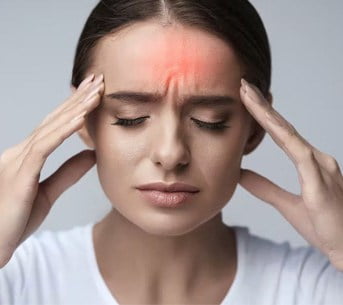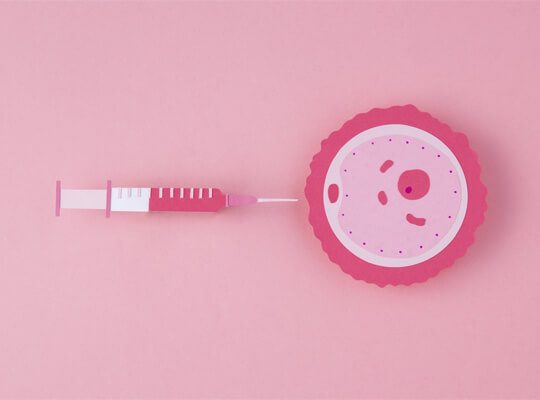Headaches
Table of Contents
HEADACHES
Headaches are a very common condition that most people will suffer from at some point in their lives. A headache is characterized by pain in the head or face. This sensation can be throbbing, continuous, sharp, or dull. Medication, stress management, and biofeedback can all be used to treat headaches.
Headache is one of the most common types of pain in the world. Up to 75% of adults worldwide have had a headache in the previous year. Headaches are a leading cause of work and school absences. They also have an adverse effect on social and family life. Constant headaches can cause feelings of anxiety and depression in some people.
Types Of Headaches
Over 150 different types of headaches exist. They are classified into two groups: primary and secondary. Migraines, in particular, tend to run in families. Migraines are common in children who have at least one migraine-prone parent. In fact, children with migraines are up to four times more likely to develop them themselves. Eating certain foods or ingredients, such as caffeine, alcohol, fermented foods, chocolate, and cheese, as well as exposure to allergens, secondhand smoke, and strong odors from household chemicals or perfumes, can all cause headaches.
Pain from a headache is caused by signals interacting between the brain, blood vessels, and surrounding nerves. An unknown mechanism activates specific nerves that affect muscles and blood vessels during a headache. These nerves communicate pain to the brain. Migraines aren’t fully understood. But researchers think migraines result when unstable nerve cells overreact to various factors (triggers). The nerve cells send out impulses to blood vessels and cause chemical changes in the brain. The result is disabling pain.
Alcohol use, changes in eating or sleeping patterns, depression, emotional stress related to family and friends, work or school, excessive medication use, eye, neck, or back strain caused by poor posture, lighting, noise, or weather changes are all common triggers of tension headaches or migraines.
Treatment Of Headaches
One of the most important aspects of treating headaches is determining your triggers. Learning what those are, usually by keeping a headache log, can help you reduce the number of headaches you have. Your healthcare provider can tailor treatment to you once you’ve identified your triggers. When you are tense or worried, for example, you may experience headaches. Counseling and stress management techniques can help you deal with this trigger more effectively. You can avoid stress-related headaches by lowering your stress level. Not every headache necessitates the use of medication. A variety of treatments are available. Treatment options vary depending on the type, frequency, and cause of your headache. Stress management teaches you how to deal with difficult situations. Relaxation techniques can help you manage your stress. To relax, you use deep breathing, muscle relaxation, mental images, and music. Biofeedback teaches you to recognize when tension is building in your body. You learn how your body responds to stressful situations and ways to settle it down. Sensors are attached to your body during biofeedback. They track your involuntary physical responses to headaches, such as increases in breathing rate, pulse rate, heart rate, temperature, muscle tension, and brain activity.
Over-the-counter pain relievers usually work well for occasional tension headaches. However, excessive use of these medications can result in a long-term daily headache. Your provider may recommend prescription headache medications if you have frequent or severe headaches. A migraine attack can be stopped with triptans and other medications. You take them as soon as you notice the first signs of a headache. Migraines can sometimes be avoided by taking medications for high blood pressure, seizures, or depression. To reduce headache frequency, your doctor may advise you to try one of these medications.

The key to avoiding headaches is determining what causes them. Triggers are unique to each individual; what gives you a headache may not bother others. You can avoid or reduce your triggers once you’ve identified them. Strong scents, for example, might set you off. Avoiding perfumes and scented products can significantly reduce the number of headaches you experience. The same is true for other common triggers such as problematic foods, a lack of sleep, and poor posture. Many people, however, are unable to avoid triggers or identify triggers. In such cases, a more tailored multidisciplinary approach with a headache specialist is frequently required.
Headaches can be relieved by treating underlying health issues that cause them, such as high blood pressure. There have recently been several new advances in our understanding of what causes headaches. Although we are closer to a cure than ever before, there is currently no cure for primary headaches. Treatment focuses on symptom relief and preventing future episodes.
When You Have To Visit Your Doctor?
Most headaches, while painful, do not pose a serious threat. However, headaches can occasionally be a sign of a potentially fatal condition. The following are indications that you should seek immediate medical attention:
For More Information
Please do not hesitate to contact us for more information on the subject.



